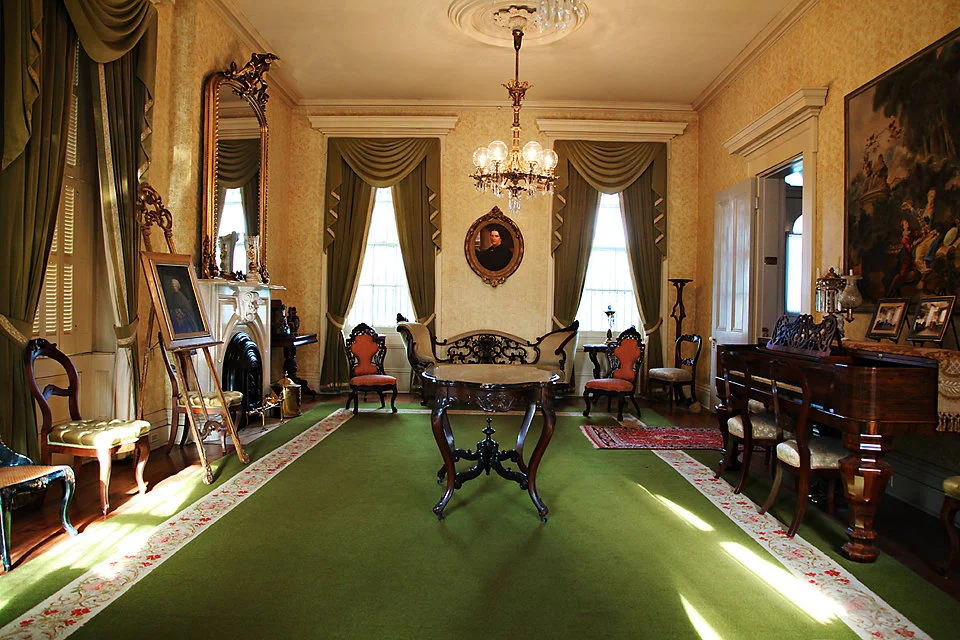History of the Mansion
The Mansion was built in two sections by families with very different lifestyles. Henri Chatillon built the first section, a four-room brick farmhouse, in 1849. He was a guide and hunter for the American Fur Company of St. Louis in the 1840’s before settling permanently in the area with his second wife Odile Delor Lux. Chatillon served as a guide for Francis Parkman, Jr. in 1846. Parkman wrote about their trip in his book “The Oregon Trail."
Chatillon sold the “farmhouse” in 1856 to Dr. Nicolas N. DeMenil and his business partner Eugene Miltenberger. DeMenil was a wealthy Frenchman. He came to St. Louis in 1834 and married Emilie Sophie Chouteau, who was a descendant of St. Louis’ founding family. In 1861, the DeMenil family hired English architect Henry Pitcher to turn the farmhouse into a Greek Revival Mansion. At that time they moved into the home permanently. The addition was completed in 1863.
When Nicolas died in 1882 his only surviving child Alexander inherited the house. He lived there until his death on Thanksgiving Day in 1928. Three generations of the DeMenil family occupied the home until 1929. From that year until 1945 the Mansion was maintained by caretakers, Edwin and Jennie Kaiser. Mr. Lee Hess bought the property in 1945 to develop the natural cave system under the property, the Cherokee Cave, into a tourist attraction.
When Interstate 55 was being planned in the early 1960's the house was going to be torn down. The Landmarks Association decided to buy the land and home from the State of Missouri Highway Commission. With a $40,000 gift from Union Electric they bought the house and land. Restoration of the mansion began in the summer of 1964. Formal dedication of the restored Mansion took place in 1965.

